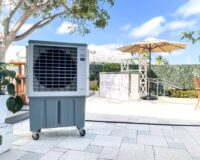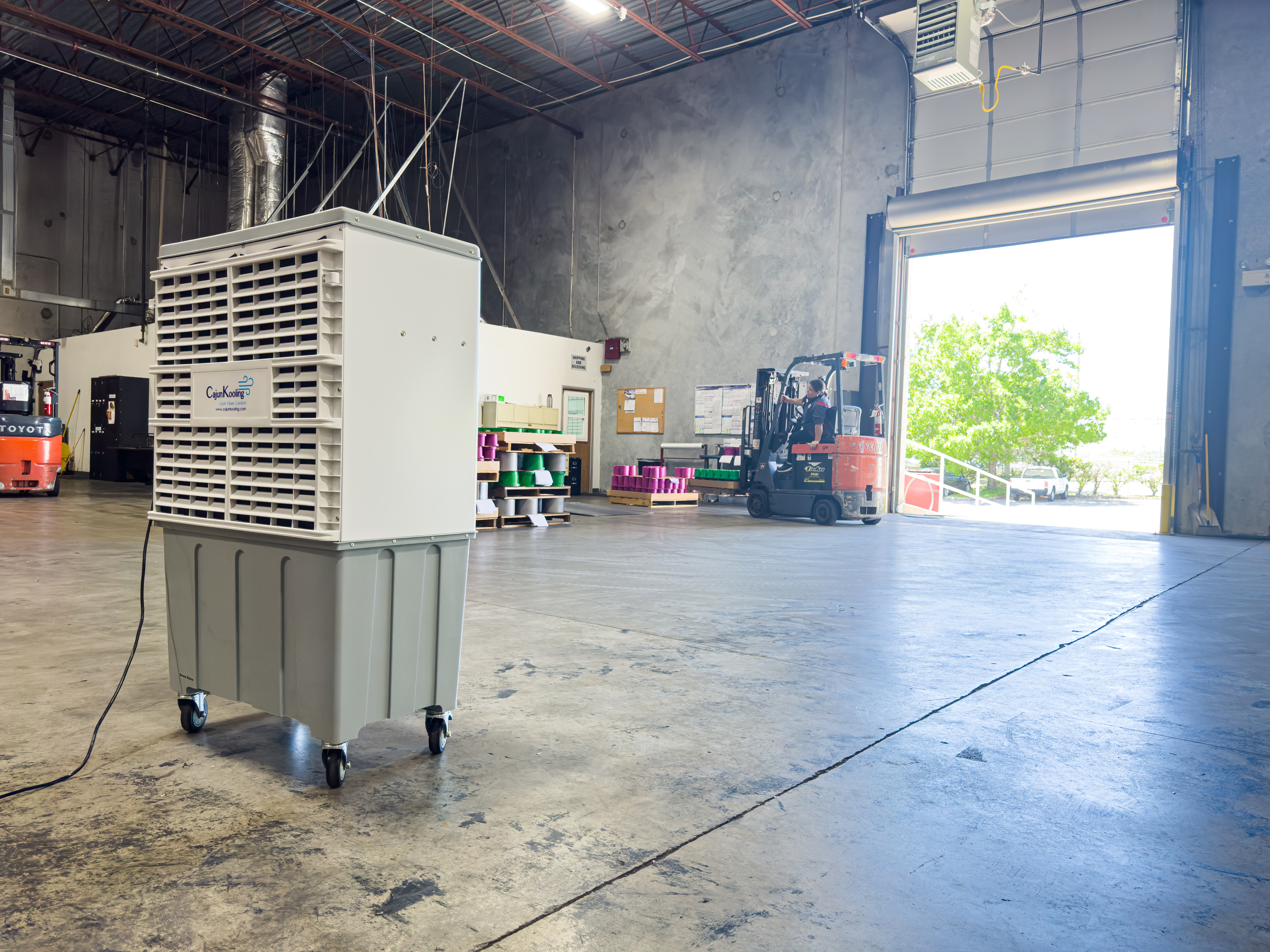The Relationship Between Heat Stress and Worker Productivity

Have you ever stepped into the workplace, ready to tackle the day, only to have the temperature uncomfortably rise? You may have noticed a dip in your productivity if you weren’t too uncomfortable.
This scenario is common and impacts individuals in every industry. With the right approach, businesses can promote healthy practices and a culture of safety. Therefore, we’ll explore the intricate relationship between heat stress and worker productivity.
Understanding Heat Stress
Heat stress occurs when the body cannot cool itself down effectively, which is a major concern in workplaces without adequate climate control. Our bodies work harder to maintain a stable internal temperature when exposed to high temperatures, which leads to dehydration and fatigue and impacts our ability to concentrate on tasks.
Notably, heat stress affects industries differently. For example, outdoor jobs, such as construction and agriculture, are naturally more susceptible. However, indoor workers in poorly ventilated spaces also face challenges. Understanding which environments are most at risk helps us better prepare for its effects.

The Physical Effects of Heat Stress
You shouldn’t underestimate the physical effects of heat stress. They can include:
- Excessive sweating, leading to a loss of essential fluids and minerals, causing dehydration.
- Increased tiredness and lethargy due to the body expending more energy trying to cool itself.
- Heavy sweating, rapid pulse, dizziness, and nausea—all symptoms of heat exhaustion—can hamper physical performance.
- Loss of salt via excess sweat, leading to painful cramps in muscles, affecting mobility and strength.
- Dizziness and headaches due to an elevated body temperature.
- Heat Stroke
These conditions are serious and require immediate medical attention. Protecting workers from these risks should be a top priority for employers.
The Mental Health Effects of Heat Stress
Heat stress can also significantly impact mental health, contributing to a range of psychological effects, such as:
- Impaired cognitive function: High temperatures can affect thinking processes, making it more challenging to concentrate, process information, and make decisions.
- Increased irritability: Heat can exacerbate feelings of frustration, impacting interpersonal relationships and communication.
- Anxiety and stress: Persistent exposure to heat may heighten levels of stress and anxiety, complicating situations for those already dealing with mental health issues.
- Mood swings: The discomfort from excessive heat can lead to mood fluctuations, influencing day-to-day emotional stability.
- Sleep disturbances: High temperatures, especially during the night, can interfere with sleep quality, leading to insomnia or restless sleep.
- Decreased motivation: Prolonged exposure to heat stress may reduce motivation and engagement, affecting overall productivity and job satisfaction.
Addressing the mental health impacts of heat stress is crucial for fostering a productive and supportive work environment. We encourage businesses to develop comprehensive strategies that include regular breaks, enhanced hydration options, and access to cool, shaded areas.

Identifying Vulnerable Populations
Certain populations are more vulnerable to the effects of heat stress, necessitating extra precautions to safeguard their well-being. Among these groups are older adults and young children, whose bodies are less efficient at regulating temperature. Individuals with chronic illnesses, such as heart disease or respiratory conditions, also face increased risks, as their bodies may be less capable of handling the additional strain imposed by high temperatures.
Furthermore, workers in sectors with prolonged heat exposure, such as agriculture, construction, and manufacturing, are particularly susceptible, especially those without access to adequate hydration and cooling breaks. By recognizing these vulnerable populations, businesses and communities can implement targeted measures to protect those most at risk from the adverse effects of heat stress.
Solutions for Managing Heat Stress
Businesses can use various strategies for managing heat stress and maintaining productivity.
Implementing Effective Hydration Practices
Ensuring that employees have access to adequate hydration is a fundamental step in managing heat stress. Workplace policies should include providing easy access to cool, potable water and encouraging workers to drink regularly throughout the day, even if they are not thirsty. Educating staff about the importance of hydration and recognizing the signs of dehydration can also be beneficial.
Improving Workplace Ventilation
Enhancing ventilation in workplaces can significantly reduce the risks associated with heat stress. Employers should consider installing fans, air conditioners, or ventilation systems to circulate air and reduce indoor temperatures. In addition, using shading solutions for windows and improving insulation can help maintain a cooler environment.
Scheduling Heat-Intensive Tasks Wisely
Planning work schedules to avoid heat-intensive tasks during the hottest parts of the day can mitigate heat stress risks. Employers should aim to schedule strenuous or outdoor activities during cooler periods, such as early mornings or late afternoons, when temperatures are lower and more manageable.
Offering Regular Breaks
Implementing regular and frequent breaks can help workers manage heat stress more effectively. Workers should take these breaks in shaded, cool areas to allow the body to recover from exertion and heat exposure. Ensuring a balance between work and rest can reduce fatigue and prevent heat-related illnesses.
Providing Protective Clothing and Equipment
Equipping employees with appropriate protective clothing and gear can aid in heat stress management. Light-colored, loose-fitting, and breathable clothing helps facilitate air circulation and body cooling. Additionally, hats, sunglasses, and sunscreen are important for outdoor workers to protect against direct sunlight.
Conducting Heat Stress Training Programs
Educating employees and management about the risks and signs of heat stress is vital. Training programs should cover preventive measures, symptom recognition, and emergency response procedures. By equipping workers with knowledge, they can better protect themselves and their colleagues.
Encouraging a Culture of Safety
Creating a culture of safety is essential for combating heat stress. Employers should actively promote safe practices and encourage workers to prioritize their well-being. Recognizing and rewarding employees who prioritize safety fosters a positive work environment.
Involving workers in safety discussions empowers them to take ownership of their health. This collaborative approach ensures everyone remains committed to maintaining a safe and productive workplace. Additionally, regular safety audits and reviews can help employers identify areas for improvement. Remember, continuously striving for a safer work environment benefits employees and businesses alike.
Ensuring a Safe, Comfortable Environment for Workers
The relationship between heat stress and worker productivity is undeniable. By understanding its impact and implementing effective strategies, businesses can create safer, more efficient environments. Prioritizing employee well-being benefits everyone involved, leading to increased productivity and job satisfaction.
An industrial evaporative cooler from Cajun Kooling can be an effective part of your strategy if you want to enhance your organization’s heat stress management efforts. By partnering with us, you’ll have access to reliable, affordable units that won’t let you down when it matters most. Together, we can ensure a healthier, more productive future for all workers.





